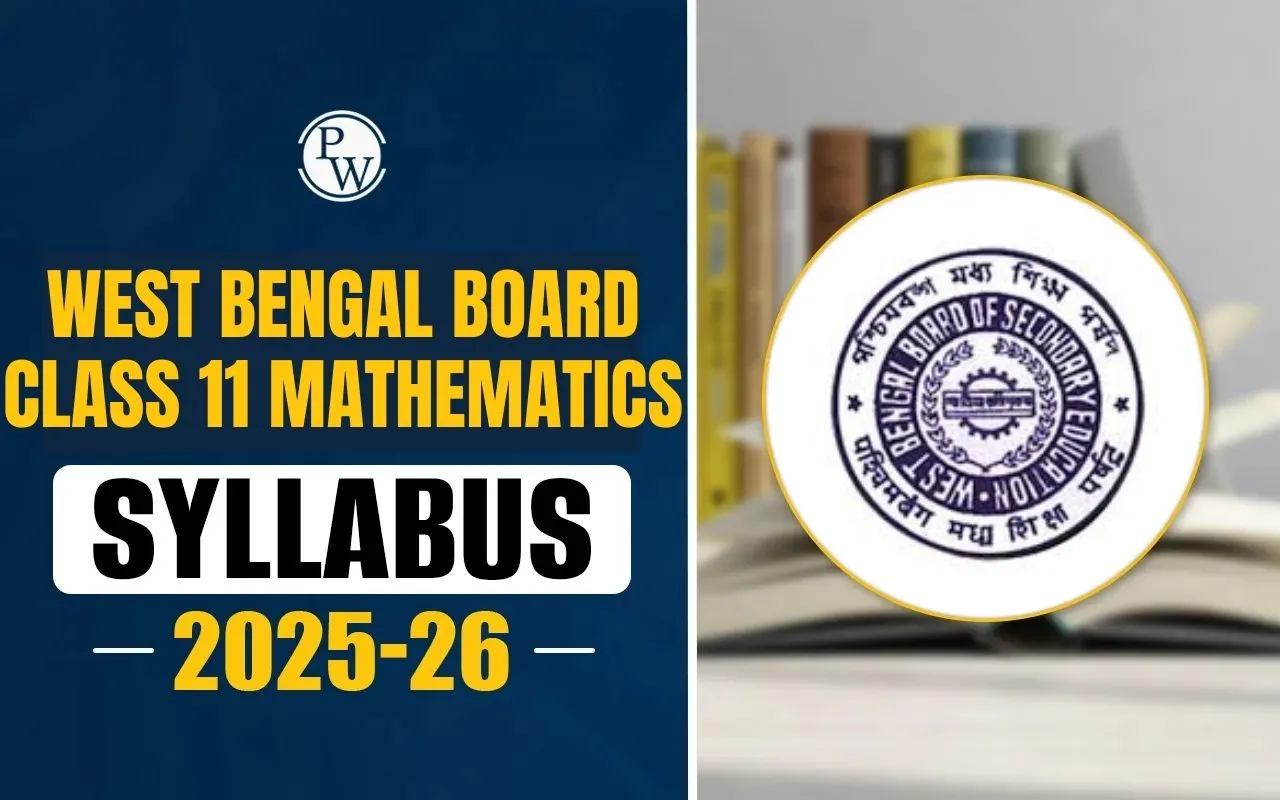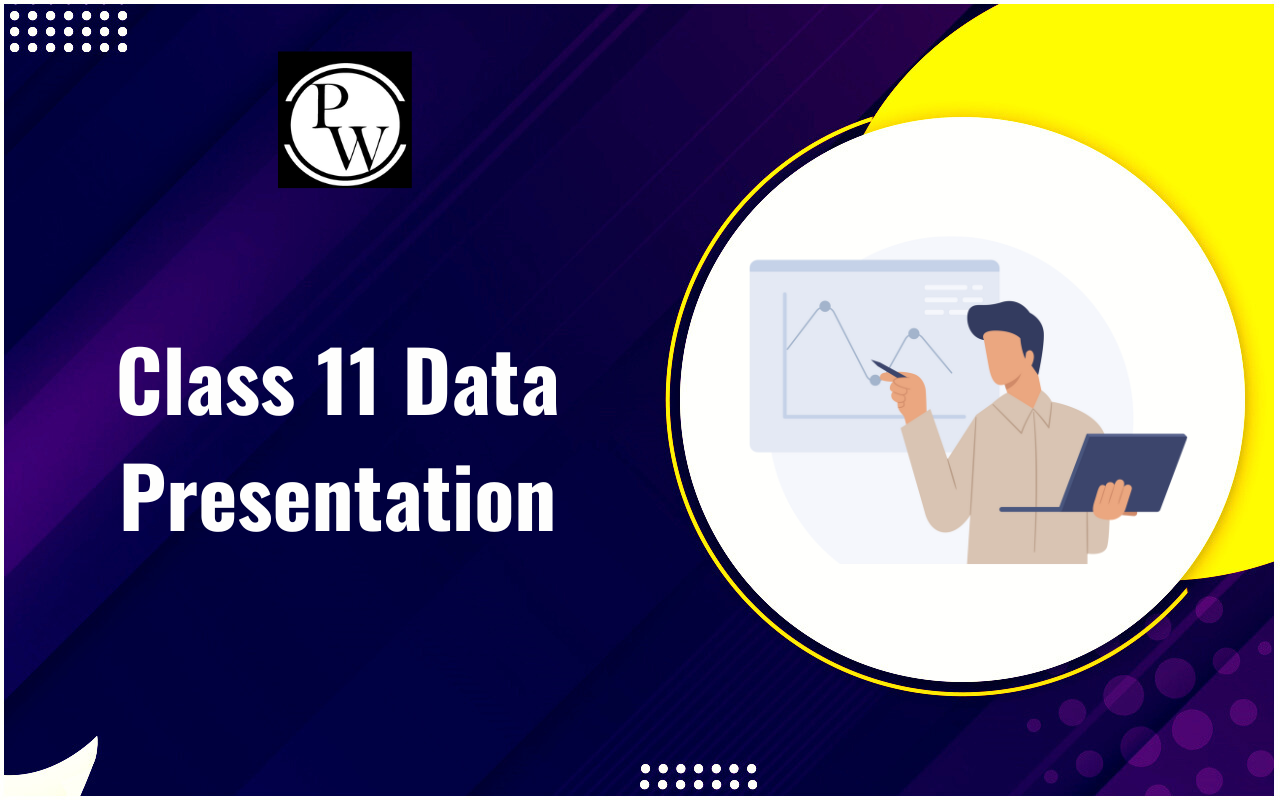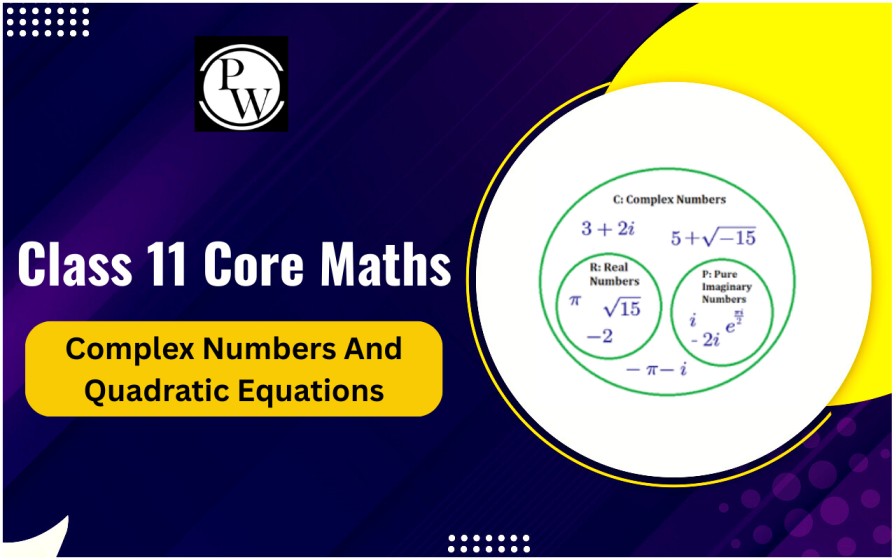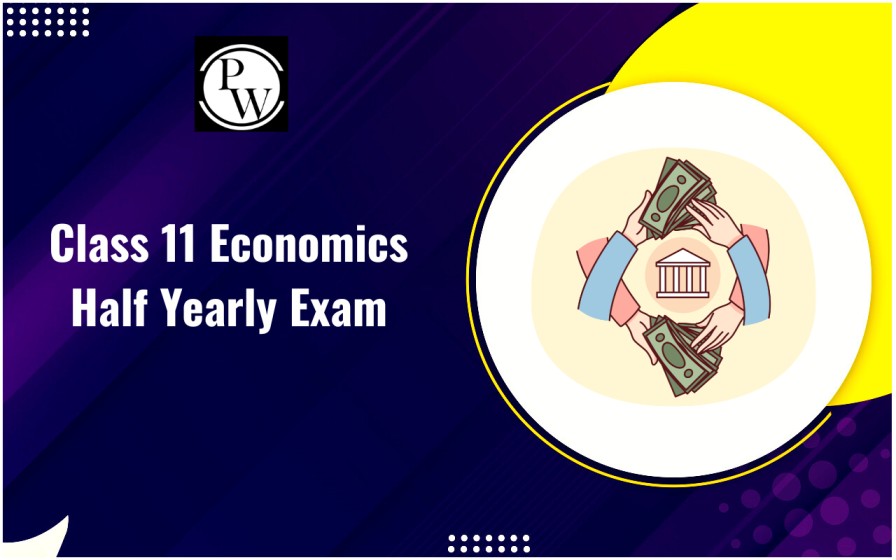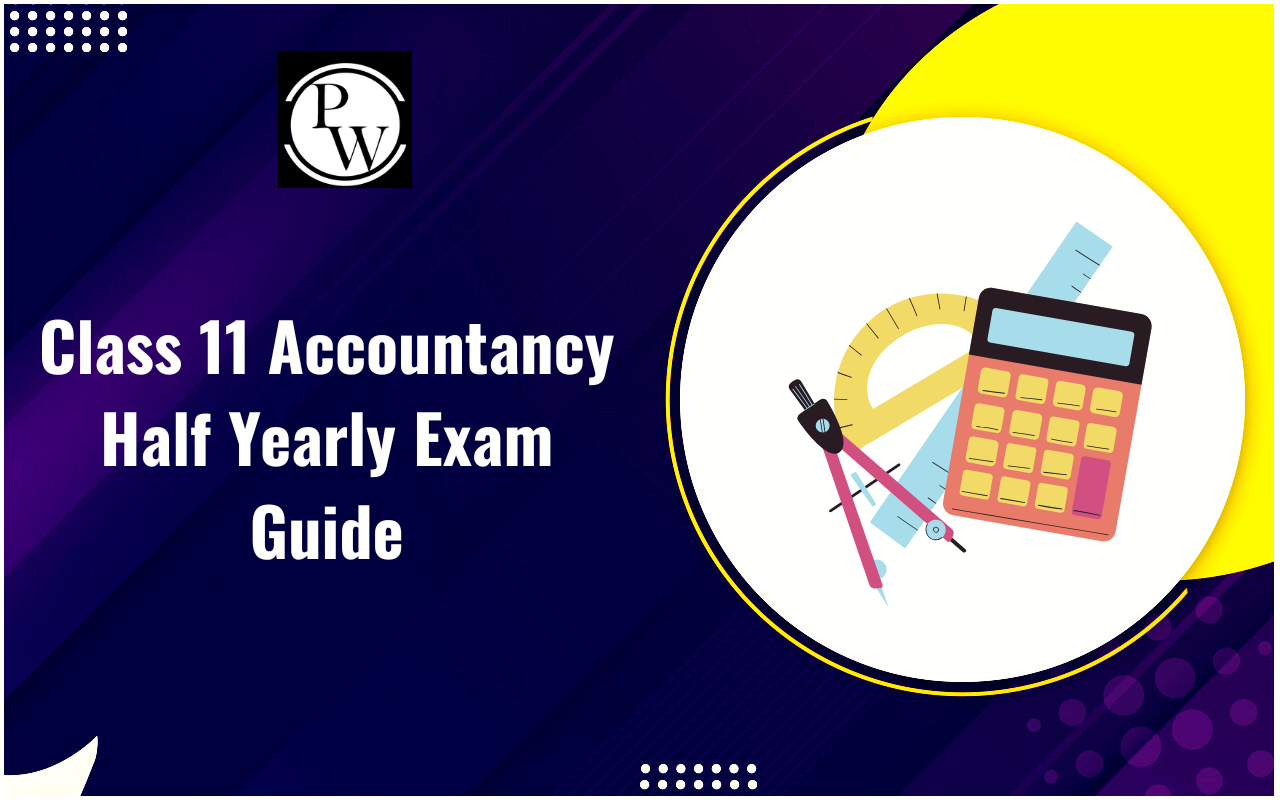
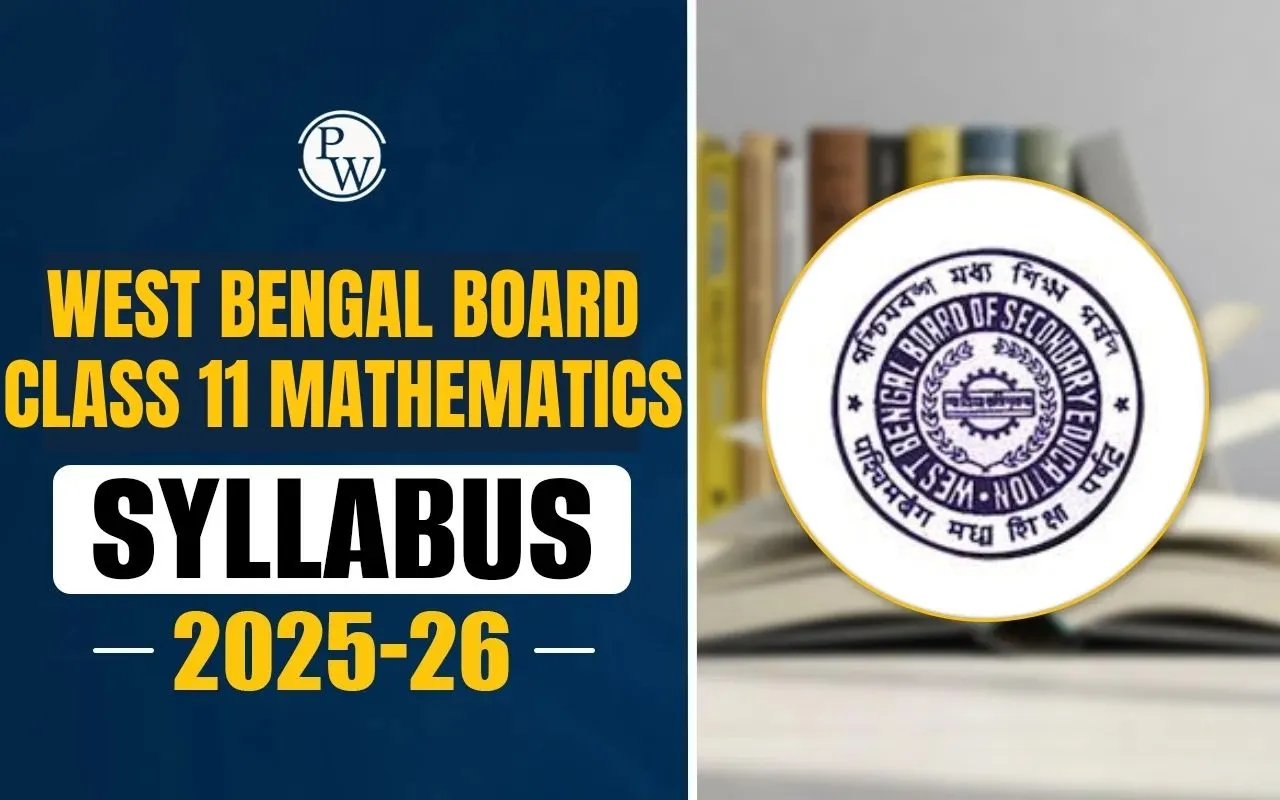
West Bengal Board Class 11 Mathematics Syllabus 2025-26 introduces a revised academic framework intended to strengthen students' foundational understanding of mathematics. With a focus on conceptual clarity and practical application, this syllabus aims to encourage a logical and analytical approach to learning.
In line with current educational practices, the syllabus has been thoughtfully developed to cover a wide range of mathematical areas, including algebra, geometry, calculus, and statistics. This guide outlines essential components such as unit-wise topics, assessment structure, and subject overview to assist students in their academic journey.
West Bengal Board Class 11 Mathematics Syllabus 2025-26 Overview
Mathematics at the Class 11 level plays a pivotal role in academic and professional streams such as engineering, economics, data science, and physical sciences. The syllabus helps students strengthen their problem-solving techniques, logical thinking, and theoretical knowledge.
| West Bengal Board Class 11 Mathematics Syllabus | |
| Aspect | Details |
| Education Board | West Bengal Council of Higher Secondary Education (WBCHSE) |
| Class | 11th |
| Subject | Mathematics |
| Academic Year | 2025-26 |
| Total Marks | 100 |
| Assessment | Theory (80 marks) + Internal Assessment (20 marks) |
West Bengal Board Class 11 Mathematics Syllabus 2025-26 Marks Distribution
The West Bengal Council of Higher Secondary Education has released the Class 11 Mathematics syllabus for the academic year 2025-26 on its official website. Students aiming to prepare well for the West Bengal HS examination can access the updated syllabus and exam structure here. This syllabus also reflects several updates made by the Board in accordance with the revised exam pattern.
| West Bengal Board Class 11 Mathematics Syllabus Marks Distribution | ||
| Unit | Unit Name | Marks |
| I | Sets and Functions | 20 |
| II | Algebra | 30 |
| III | Coordinate Geometry | 10 |
| IV | Calculus | 05 |
| V | Mathematical Reasoning | 05 |
| VI | Statistics and Probability | 10 |
| Total | 80 | |
The internal assessment will carry 20 marks and includes project work, class tests, and activities focused on practical learning.
West Bengal Board Class 11 Mathematics Syllabus
2025-26
Unit-Wise Breakdown of West Bengal Board Class 11 Mathematics Syllabus 2025-26
Let’s explore the units in detail to understand what the West Bengal Board Class 11 Mathematics Syllabus 2025-26 entails:
Unit I: Sets and Functions (20 Marks)
- Sets and their representations, types of sets, operations on sets
- Venn diagrams, complements, and algebra of sets
- Cartesian products and relations
- Functions: domain, codomain, types of functions, and graphical representation
Unit II: Algebra (30 Marks)
- Complex numbers and quadratic equations
- Linear inequalities and solutions
- Sequences and series: Arithmetic Progression (AP) and Geometric Progression (GP)
- Binomial theorem and its applications
- Permutations and combinations
Unit III: Coordinate Geometry (10 Marks)
- Straight lines and slope concepts
- General and intercept forms of equations
- Distance between two points
- Section formula and coordinate geometry applications
Unit IV: Calculus (05 Marks)
- Basic concepts of limits and derivatives
- Derivatives of algebraic functions
- Applications in rate of change and tangent lines
Unit V: Mathematical Reasoning (05 Marks)
- Statements and logical operations
- Truth tables and basic logic connectives
- Converse, contrapositive, and implications
Unit VI: Statistics and Probability (10 Marks)
- Measures of dispersion: Range, Mean Deviation, Variance, and Standard Deviation
- Introduction to probability, basic events, and axioms of probability
Why Focus on the West Bengal Board Class 11 Mathematics Syllabus 2025-26?
The West Bengal Board Class 11 Mathematics Syllabus 2025-26 is not just a collection of formulas and theorems. It is a comprehensive learning module aimed at enhancing analytical skills and application-based understanding. Whether preparing for board exams or competitive tests, this syllabus lays the groundwork for all future mathematical studies.
The West Bengal Board Class 11 Mathematics Syllabus 2025-26 provides a robust platform for students to enhance their mathematical abilities. With a curriculum that balances theory and application, it encourages students to think critically and solve problems logically.
Preparation Tips for West Bengal Board Class 11 Mathematics Syllabus 2025-26
Follow these tips to prepare efficiently for the mathematics syllabus and improve your grasp over concepts and problem-solving techniques.
Understand Concepts Thoroughly: Avoid rote learning. Focus on understanding each topic clearly.
Practice Regularly: Solve different types of problems from each chapter to gain mastery.
Use Graphical Tools: For geometry and functions, graphical understanding aids conceptual clarity.
Solve Previous Year Questions: This helps identify question patterns and important topics.
Revise Weekly: Regular revision of formulas and theorems strengthens memory.
Staying updated and practicing regularly is the key to excelling in mathematics. Make sure to align your preparation strategy with the West Bengal Board Class 11 Mathematics Syllabus 2025-26 for effective results.
Stay consistent, stay curious, and let mathematics empower your academic journey. For the latest updates, syllabus changes, and downloadable resources, always refer to the official WBCHSE notifications.
Join PW Commerce Online Course and unlock your potential with quality education and dedicated learning support.
| Related Links | |
| Commerce Class 11 | Class 11 Accountancy |
| Class 11 Commerce Syllabus | Class 11 English |
| Class 11 Business Studies | Class 11 Economics |
| Class 11 Maths | Class 11 Commerce Result |
West Bengal Board Class 11 Mathematics Syllabus FAQs
Where can I download the West Bengal Class 11 Mathematics Syllabus 2025-26?
Has there been any change in the syllabus or exam pattern for 2025-26?
How many marks are allotted for internal assessment in Mathematics?
What topics are covered under Algebra in the Class 11 syllabus?

